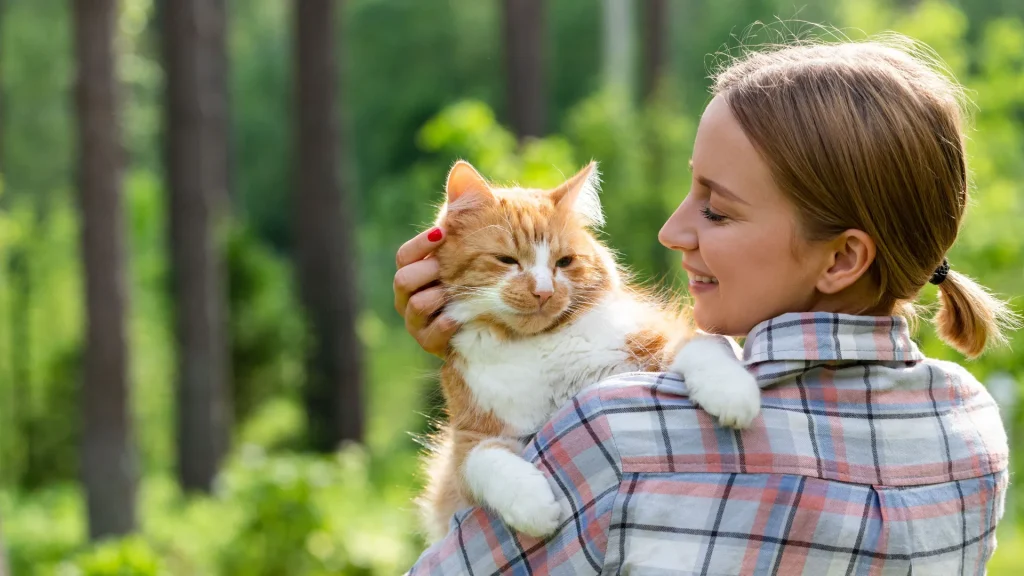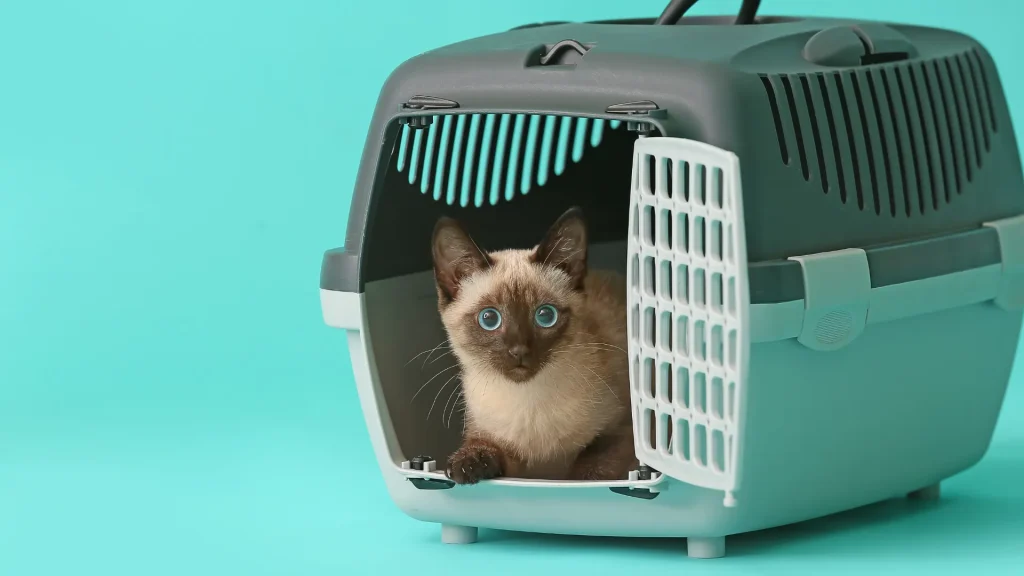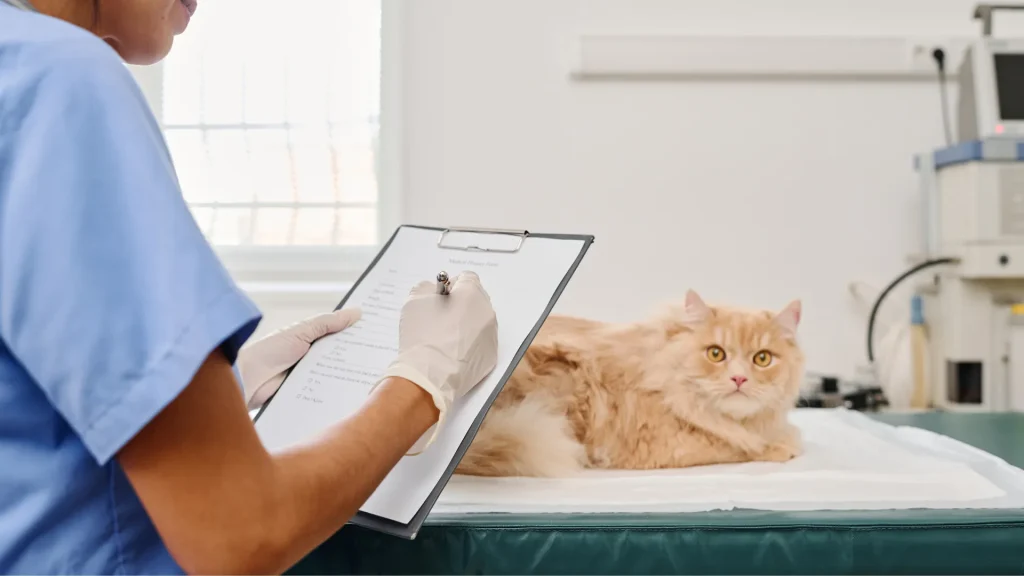



When it’s time to pack up the camper and head to a nearby RV park for the weekend, do you take your pets? If you’re like us, it’s hard to imagine leaving them behind. Today, we’re sharing the pros and cons of RVing with cats and giving seven tips to help make their experience (and yours!) more enjoyable. Let’s dive in!
While dogs may be the most common pets at campgrounds, some RVers travel with cats. These independent creatures love curling up on the dashboard of Class As or perching on a window shelf of a travel trailer where they can watch people and enjoy the sunshine. Most roam freely within the RV and find secret hiding places when they want to escape.
As long as you make your cats comfortable, RVing with cats strengthens those bonds and makes the experience more enjoyable. After all, they are part of the family, too, right?
Pro Tip: If you and your pet are frequent road warriors, be sure to check out Where to Find RV Rentals That Allow Pets!
We love RVing with our pups. Whether you have dogs, cats, rabbits, parrots, or other types of animals, they’re family members. We want to travel together as much as we can. We don’t want to leave our furry friends at home while we enjoy a weekend camping trip.
RVing with cats (or any other pet) makes you feel like the whole family is together. You can watch a movie while your purring friend sits on the sofa by your head. You may not take your cat hiking or paddling like dog owners do, but a smile stretches across your face when you return to the RV after a long day of exploring, and your pet is there to welcome you home.
One advantage of RVing with cats rather than dogs is that they require less attention. While some RVers crate their dogs or confine them to a particular spot in the rig when they’re gone, most travelers let their cats roam freely. Because of the litter box, you don’t have to take cats out to use the bathroom, and they don’t require multiple daily walks.

However, even though we love our pets, RVing with cats isn’t for every owner. Some cats are too anxious when traveling. It does more harm than good to bring them along.
You also have to do some modifications to ensure your cat will enjoy the experience as much as you. Installing safety devices and creating window perches are just a couple of things that you’ll want to do. These modifications take time and money and may not be worth the hassle for some RVers.
Having a pet at the campsite adds responsibility. You have to find a place for the litter box. You have to pack food, cat toys, and other accessories. While we think the added responsibility is worth it, other RVers may not feel the same way.
Today, we want to share seven tips for RVing with cats to ensure they’re safe and have a great time. Some of these tricks, like easing travel anxiety and making modifications, take time. But we believe investing in your pet will be worth it so you can share camping memories!
Some pets struggle with travel anxiety. They don’t like going to new places or being taken away from the familiarity of their homes. We suggest placing something like a blanket or toy in the cat carrier so your pet finds comfort when he’s anxious. If you travel in a motorhome, you may still want to crate your cat just until he gets more comfortable in the moving vehicle.

Before you leave for your first camping trip with your cat, decide where to put the litter box. You don’t want it out in the middle of the RV, but you also don’t want it hidden or put away where your cat can’t easily reach it. Some RVers remove a bottom drawer and put the litter box in its place. This is just one of the RV modifications for cats we have shared. You can check them all out here, where we’ve given you all the tips we have for cat RV modifications.
In that same article, we mention that cats like to escape. Find places where your pet can hide without getting into trouble. This could be a cat cave or a window perch. An indoor RV cat enclosure is bulky but provides ample room for your cat to roam and hide.
When RVing with cats or dogs, you want to ensure their safety. Install cat gates and locks to prevent them from escaping. If you create a cat catio, make sure there are no small holes or ways your pet can escape your rig. You might also consider getting a pet monitor to keep an eye on your cat when you’re gone. Many of these monitors also have temperature control, which is critical if you lose power.

We suggest taking a few small trips if you’ve never taken your cat camping. See how your pet does and if the travel anxiety eases. It’s like practicing before the big game. You might even stay a night in your driveway so your cat gets used to the RV.
If you have an indoor-only cat, give them outdoor time with a leash. A harness with a leash will provide additional comfort, especially if your cat has never walked on a leash. With squirrels, raccoons, and other wild animals roaming campgrounds, you certainly want to keep your pet safe. Plus, there are plenty of dogs at RV parks. You want to keep your cat near and protected.
- Cat Harness with Leash, Fits Average Cats: Size measuring:Neck Girth: 8.5 -11 Inches, Chest Girth: 13.5 – 16 Inches….
- Comfortable Outdoor Harness: This real comfy cat harness will snugly fit your feline friend’s body, while still keeping…
Finally, always travel with vet records. Even if you’re just going a few miles down the road, you want to have vaccination records, past surgeries, and any other pertinent information regarding your cat’s health. You hope never to need to use them, but should an accident or injury occur, you’ll be glad they’re on hand.

Traveling with our pets makes camping so much more enjoyable. We love spending time with our dogs around the campfire or curled up together on the sofa. Although we don’t have cats, we’re sure you feel the same as a cat owner. Our pets aren’t with us forever. And since they’re family members, why not bring them along on our camping adventures?
Have you considered RVing with cats? Any suggestions for more tips and tricks?


